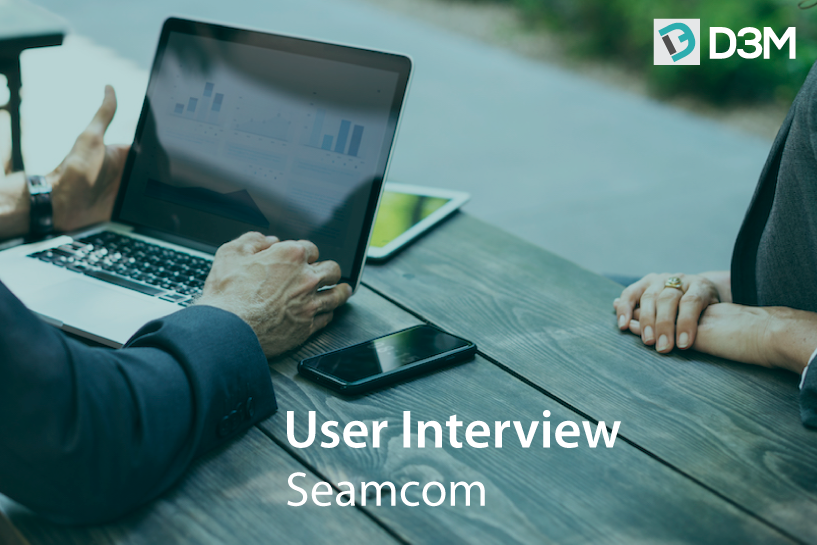![]() This week we sat down with our very own Damithri Silva. Director of Operations & Support at Teldio, the MOTOTRBO applications provider, she uses D3M daily, if not hourly.
This week we sat down with our very own Damithri Silva. Director of Operations & Support at Teldio, the MOTOTRBO applications provider, she uses D3M daily, if not hourly.
How long have you been working with two-way radios?
I’ve been working with radios for five and a half years. Before I joined Teldio, I thought radios just played FM & AM. Since then, my team and I have installed hundreds of our applications worldwide.
What do your daily activities entail?
Everyday is an adventure. It could be supporting current customers either on the phone or remotely and entails working with codeplugs, system design and installing up our own applications with dealers. My day could also involve pre-sales engineering to see how we can best propose our solutions to potential customers, radio programming design as well as network management. There are some operations and product management work thrown in throughout the day as well. It’s always a mystery.
Who do you interact with on a daily basis?
Sales team, IT managers, radio dealers, end users - the Teldio support team works with all of them. We deal with our own sales team and sales reps from other dealerships to ensure that proposed or sold networks are fully functioning. When we are doing application installs, we work with system engineers, a lot of field technicians and end customers to ensure that all the correct information is provided and the system is running as intended.
Prior to D3M, what tools were you using to design and document two-way radio networks that you add applications to?
A mix of Powerpoint, word documents, and email to collaborate with dealers, end customers, and technicians. I would list out requirements, ask for IP addresses, frequencies, radio IDs, etc.. All the information used to be stored locally on my computer or on a shared network drive, which was not accessible outside of the office. I used to spend so much time going through emails to search for specific items from dealers.
Dealers would send me network diagrams through a variety of different methods - hand drawn, Visio, Excel, over the phone - it was so hard to decipher and pull information off the diagrams. Everyone had a different method to explain and visualize their networks. We often had to chase down versions to make sure that we were working from the latest version with the correct IP addresses, channel numbers, codeplugs and such.
How does D3M compare to other tools you’ve used in the past?
Night and day. I no longer have to search through a million emails to find the information I want. The fact that I can type a customers name, click on a link and have all the up-to-date information and network details in front of me that I require to install applications is a lifesaver.
I think that a lot of people think that D3M is just a network design tool. It is so much more than that. Where the tool really shines is all the radio network specific information it can store. The tool builds all the fleetmap information for you, creates a clear layout of the network, and keeps track of everything - that is what’s key.
How often are you using D3M and does it save you time?
Every single day! Anytime I get a call whether it’s a new or existing customer I use D3M. If it is an existing customer, I pull up their specific radio project to reference, and if it is a new project I create a new project and start collecting vital information for their network.
It's hard to quantify how much time the tool saves me, but if I didn’t have D3M, I would say I would need to add at least a couple of hours to my day. The tool has simplified and organized my day. Everything runs smoothly.
How has Teldio implemented D3M into their process of creating and managing radio network projects that they are installing applications on?
Ideally, our sales reps, when they are working on an opportunity, would create a D3M diagram and add as much information as they can get. Once the solution is sold, the support team takes ownership of the project and sets up a time to call the dealership to gather all the critical information and store their codeplug files in D3M.
On the D3M diagram we annotate where we need information and share a live link to update information together. That link stays the same, but the project evolves as information is added. D3M is the key part of our support system.
At what sales stage (Pre-sales, configuration, procurement, installation, support) has D3M helped you the most?
Definitely the configuration stage. Once you have a radio codeplug, it is easier when we can lay out the system and note that the system has 3 repeaters, and these are the channels that have their talkgroups on and these are the radio IDs etc., If that information is already there, it makes things easier to configure when it comes to applications.
In terms of post-sales support, D3M has been extremely beneficial as well. We could have a system that we installed 3 years ago and they contact us about adding radios to their network or upgrading something. I have a good memory, but not that good. With D3M we can go back and see all the details associated with that project.
How do you store customer’s fleepmaps, codeplugs, etc.?
Since D3M auto generates fleetmaps it’s always there, but we do store all the final version of the codeplug & licensing information all with all the other project details.
Has D3M enabled your team & office to centralize data & increase collaboration?
Definitely! Before, when a support team member was out of the office, we had to sit down and discuss where we were at with each project which typically took one hour to review everything. This is where Project A is in terms of progress, this is how it’s configured and here’s where we left it. Now, we don’t even have to talk because D3M always has the most up-to-date version of the project. The support team shares a D3M Organization account, so we always have visibility on every project.
Would you recommend D3M to another application provider?
Definitely. We’ve actually worked with other application providers on D3M. When there is a project that we are both involved with it’s easier for us to enter all the information into a diagram and share it with them rather than sending information back and forth. Other application providers have done the reverse and sent us the information on D3M as well. With all the benefits D3M has given Teldio, I can’t see why D3M wouldn’t be beneficial to all the other application providers when working with their own customers.
What feature do you like best about D3M?
The fact that all the information that I need is in one location and that I know that everything is the latest version. It’s easy to access. I don't have to look at multiple different tools and files to get the information that I need to move the project forward.
As well, the fact that I don’t have to be at the office to help a client with a project really helps. When I’m on the road doing an install, or at home and an emergency comes up with another client, I don’t have to go back into the office and get information off a server. I can open up D3M and get the project information that I need to resolve things.
As a third party integrator, how has D3M help alleviate stress during application installs?
The stress level has really gone down leading up to the installs and on installation day. With D3M we’ve worked with the dealer to ensure that we have all the right information. All the steps are laid out clearly. We can easily access information. It’s smooth sailing with D3M.
“D3M has been beneficial because…”
it has made my job a million times easier. It has reduced a lot of time, effort and stress that I have to spend supporting our dealers, customers and sales staff.






